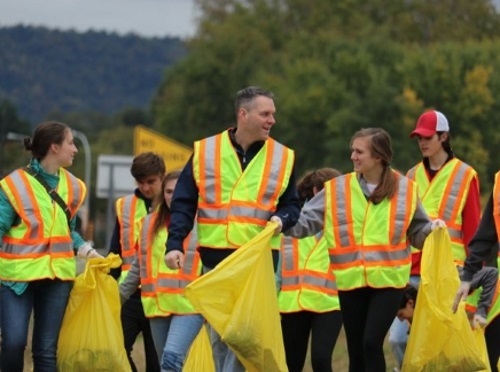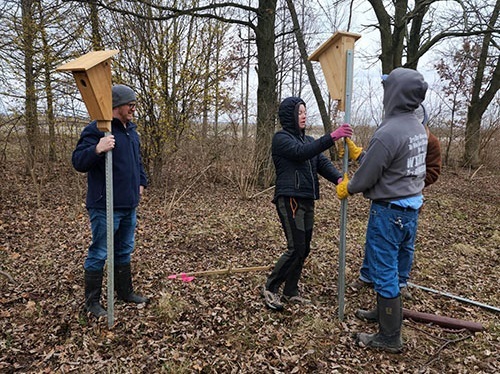FEDERAL ACTION
State DOTs Working to Expand EV Charging Network – AASHTO Journal
Biden’s environmental justice office is open. Can it get the money it needs? – Politico
FAA acting administrator calls for collaboration to advance sustainable aviation fuel commercialization – CAPA
The Supreme Court Is Pursuing a Very Dangerous Strategy for the Environment – New York Times (Opinion)
COVID-19
Pandemic sparked ‘aggressive’ driving culture, FMCSA official says – Land Line
US airlines, travel industry push White House to end pre-travel testing – CNN
INFRASTRUCTURE RESILIENCE AND SUSTAINABILITY
Flood sensor project will offer city real-time data as storms intensify
Integrating Resilience into Infrastructure Decision-Making – AASHTO Journal
You Can Build It. But Will They Come? – Slate
Tesla and others lobby for federal funding of charging infrastructure for electric trucks – Electrek
New York Announces New Online Resource Center for State’s Continued Expansion of Electric Vehicle Infrastructure – New York Governor’s Office
AIR QUALITY
Manufacturers sue CARB over truck emissions rule lead time – FleetOwner
FAA indicates ban coming on leaded gas for small planes – Columbia Insight
EPA Releases Annual Air Report, Highlighting Trends through 2021 – EPA (Media release)
ENVIRONMENTAL JUSTICE
COMTO, AASHTO and Transportation Equity with April Rai – AASHTO’s ETAP Podcast
Federal Environmental Justice Program Could Worsen Outcomes in Low-Income Neighborhoods – Planetizen
Shared Micromobility: The Future Of Equitable Transportation – CalBike (Commentary)
NATURAL RESOURCES
Bill to combat Alaska’s invasive species falls short in Legislature – Alaska Beacon
Rising water makes Lake Michigan wetlands vulnerable to invaders – Great Lakes Echo
Five years after massive manure spill, residents fighting for clean water – Wisconsin Examiner
CULTURAL RESOURCES
A New Elevated Park Offers a Blueprint to Cooling Cities – Surface
Lessons From the Golden Age of the Mall Walkers – CityLab
HEALTH AND HUMAN ENVIRONMENT/ACTIVE TRANSPORTATION
Children who attend schools with more traffic noise show slower cognitive development – ScienceDaily
Guide To Lawrence Loop Aims To Help People With Mobility Limitations Navigate City’s Nature Trails – Lawrence Times
Scooter Partnerships Take Root as Micromobility Expands – Governing
Monroe County, New York to create active transportation plan – WHEC-TV
Green Bay looks to implement bike and pedestrian plan with help from ARPA funds – WLUK-TV
TRB RESOURCES/ANNOUNCEMENTS
Health in the Climate Emergency: A global perspective – The InterAcademy Partnership
Infrastructure Equity in Action – Regional Plan Association (Webinar and link to registration)
Electric Vehicle Outlook 2022 – BloombergNEF
FEDERAL REGISTER NOTICES
Great Outdoors Month – President of the United States (Proclamation)
Request for Information (RFI) Regarding Wildfire Crisis Implementation Plan – Forest Service (Request for information)
Notice of Final Federal Agency Actions on the Interstate 81 Viaduct Project, Onondaga County, New York – FHWA (Notice of limitation on claims for judicial review of actions by FHWA and other Federal agencies.)
Approval and Promulgation of Implementation Plans; New York; Ozone and Particulate Matter Controls Strategies – EPA (Final rule)
Determination To Defer Sanctions; California; San Diego County Air Pollution Control District – EPA (Interim final determination)
Air Plan Approval; California; San Diego County Air Pollution Control District – EPA (Proposed rule)
Air Plan Approval; North Dakota; Removal of Exemptions to Visible Air Emissions Restrictions – EPA (Proposed rule)
National Environmental Justice Advisory Council; Notification for a Virtual Public Meeting – EPA (Notification for a public meeting)
Local Government Advisory Committee (LGAC) and Small Communities Advisory Subcommittee (SCAS) Meeting – EPA (Notification of public meeting)
Notice of Availability of the Draft Environmental Assessment and Draft General Conformity Determination for the Proposed Terminal Area Plan and Air Traffic Procedures at Chicago O’Hare International Airport – FAA (Notice)
Establishment of a New Parking Fee Area at Pearl Harbor National Memorial – National Park Service (Notice)
Call for Review Editor Nominations for the Fifth National Climate Assessment (NCA5) – NOAA (Request for public nominations)
Pipeline Safety: Potential for Damage to Pipeline Facilities Caused by Earth Movement and Other Geological Hazards – Pipeline and Hazardous Materials Safety Administration (Notice; issuance of updated advisory bulletin)
National Towing Safety Advisory Committee; June 2022 Virtual Meeting – Coast Guard (Notice)
Pacific Wind Lease Sale 1 (PACW-1) for Commercial Leasing for Wind Power on the Outer Continental Shelf in California – Proposed Sale Notice – Bureau of Ocean Energy Management (Notice; request for comments)


